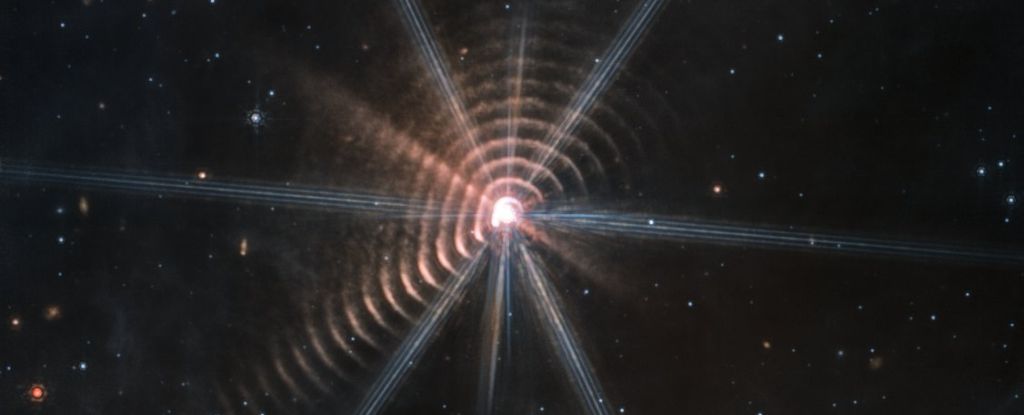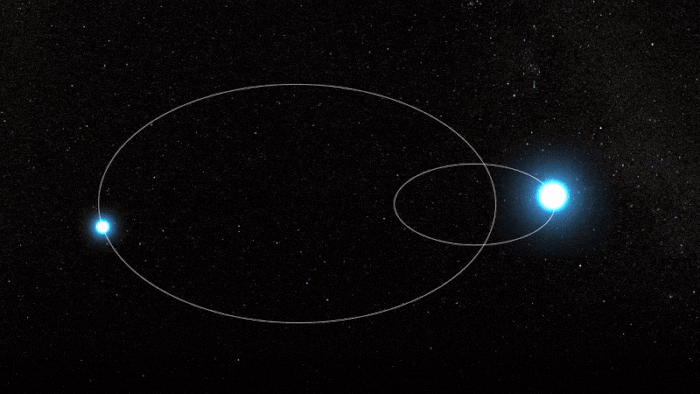The space telescope saw several rings surrounding a distant object. It is actually a pair of luminaries whose stellar winds periodically collide and create gas rings.

A star surrounded by rings
The James Webb space telescope registered a ring structure around a star called WR 140, which is 5600 light-years from us. Distortions in the form of rings around the infrared light sources are often found in the images of the new observatory. They are caused by the phenomenon of diffraction.
However, this time several rings surrounding the star are quite real. And scientists have already found a surprising explanation for their occurrence. The fact is that WR 140, which is located in the Cygnus constellation, is an extremely rare binary system.
Its first component is the Wolf-Rayet star. These are very massive objects that are in the late stages of their existence. They have almost run out of hydrogen and are mostly made of helium. The luminaries quickly lose their mass in the form of the solar wind.
The second star belongs to class O. These are the hottest stars in the universe and quite massive. They also have very powerful stellar winds. Their lifespan, as a rule, is quite short.
Mechanism of ring formation
But the most interesting thing about the WR 140 is the pattern of rotation of its components. They do not move in circular orbits. Both of them are strongly elliptical. Therefore, there are points of greatest distance (apoaster) and greatest approach (periaster).
And now, when approaching the latter, the winds of both stars, which burst from their surface at a speed of about 3000 km/s, collide and form shock waves in the matter around the stars. On the one hand, it causes bursts of radiation in a wide range. On the other hand, a large amount of dust condenses which is blown outward over time, gradually expanding and cooling.

But it happens slowly enough. Therefore, a peculiar bubble of dust is formed, which we see as a ring around WR 140. And since this happens with each passage of periaster, a system of shells appears, which is similar to the annual rings of a tree.
And just like a tree, rings in a star can tell about its past. It has already been calculated that the rotation period of the WR 140 components is 7.94. year And there are about 20 rings in total. So, they were formed over the last 160 years.
Sourced from: www.sciencealert.com

